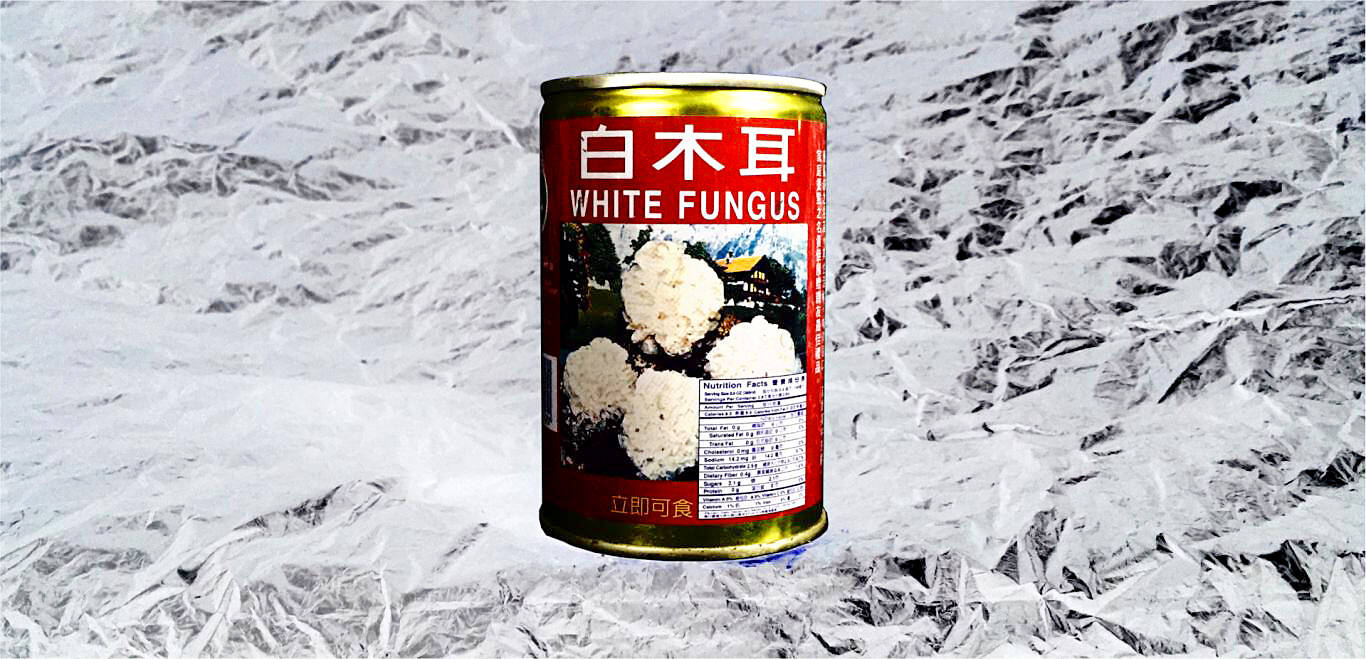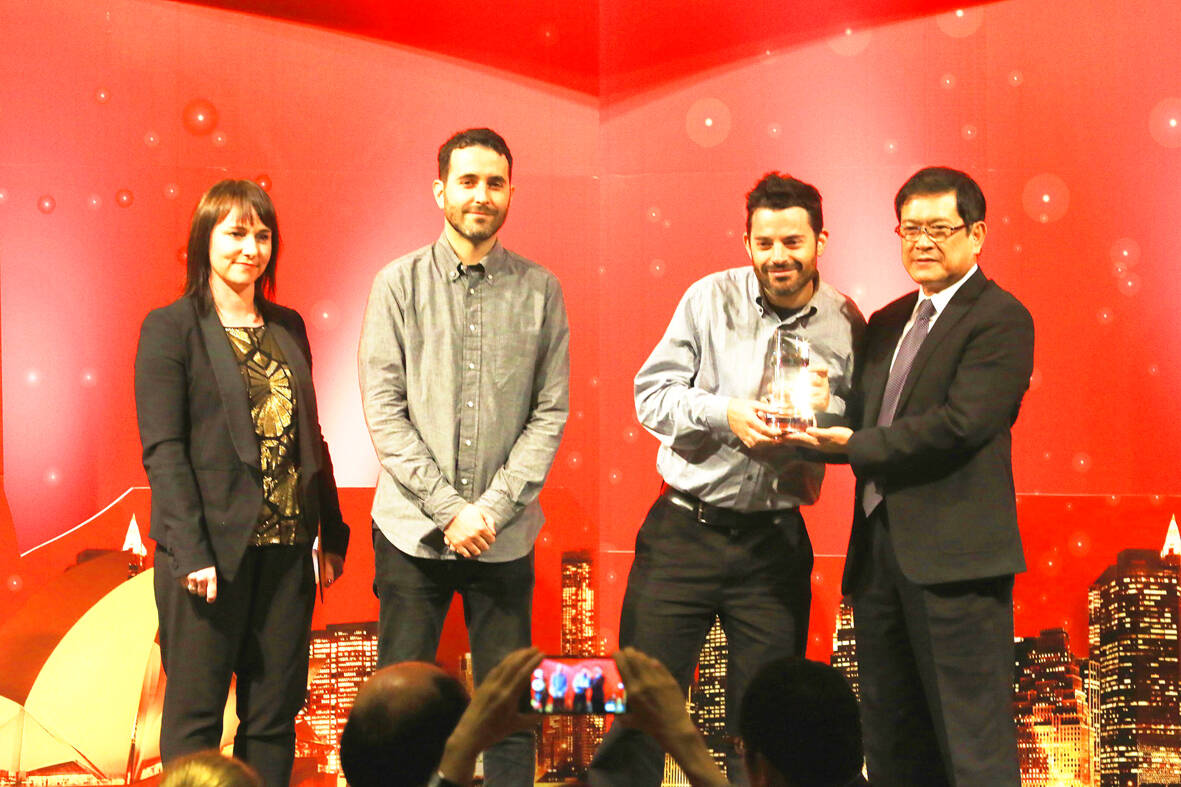Since its beginnings as a stapled, photocopied protest zine, every cover of White Fungus magazine has shown the same graphic of the titular medicinal ingredient with no description of the contents. The idea came from a can of white wood ear fungus that co-founders Ron and Mark Hanson saw in a Taichung supermarket two decades ago.
The intentional ambiguity creates confusion, stimulates curiosity and avoids attracting a singular type of audience, Ron Hanson tells the Taipei Times. The title has been called “revolting” in one article (that otherwise praised it), and it was once misplaced in the hallucinogenic section of a Canadian chain store.
“It’s an example of how translation can really alter the meaning of something; in Chinese it’s very innocent sounding but the English is jarring,” Hanson says. “We’re interested in this sort of in-betweenness; as New Zealanders living in Taiwan … we’re interested in exploring these sorts of gray areas when you’re communicating across cultures.”

Photo courtesy of White Fungus
But even the Taichung-based Hanson wondered how long he and his brother Mark could keep defying “conventional logic of what you’re supposed to do with a magazine.”
So far, 19 years. After a four-year pandemic hiatus, the 17th issue will hit the shelves outside Taiwan next week with a feature on the impact of climate change on Australia’s bats, poetry by Paul Celan, the avant garde jazz group The Art Ensemble of Chicago and a 8,000-word feature on the Bombing of Master Handan (炸寒單) religious ritual, where firecrackers are thrown at topless men paraded on a sedan.
The magazine used to be known for its popular launch parties and other art events, but Hanson says he’s simply getting a bit too old for that.

Photo courtesy of White Fungus
Hanson is especially proud of the Handan article, which took about a year to just research, calling it one of his all-time favorites.
“We’ve had Taiwan content in every issue since #7, but this is probably the deepest engagement we’ve had with Taiwan,” he says.
TWO SIDES OF FOLK RELIGION

Photo courtesy of White Fungus
Hanson and his small team began working on the latest issue in 2020, but COVID-19 put a halt to their plans.
“It’s difficult enough putting out a print publication during the best of times,” he says.
The Handan article was planned to be a short piece about the fascinating yet violent festival, but it mushroomed as the Hansons dug deeper.

Photo courtesy of White Fungus
“The more we looked into it the more interesting it became,” Hanson says. “Not just the connections to Chinese mythology, but the way some of these tales had morphed into something new under local conditions here. The connection with the criminal underworld is always interesting, and how that connects to tourism and politics — it’s a very unusual intersection which we tried to understand as best as we could.”
After about a year of research, they were able to meet some of the people who got “bombed” as representatives of the Handan deity, knowing enough by then to have some substantial conversations about what the ritual meant to them.
“It’s a brotherhood, it’s community, it’s a platform for them to express themselves, but it’s also dangerous and there’s a lot of bodily harm. It’s a complex phenomenon,” Hanson says. “It’s really a mixture of feelings when you see it; it’s loud, abrasive and violent but also beautiful. My personal experience was a very mixed sea of emotions.”
Immediately following the Handan article is a series of contemplative black and white photos of large-scale Taiwan’s deity statues by artist Yao Jui-chung (姚瑞中).
“We were interested in that juxtaposition because Handan is bright, spectacular and violent, while these photos show a calm, more meditative side … We don’t want the reader pigeonholing the phenomena of Taiwanese folk religion,” Hanson says. “It’s a bath for the eyes after all the intense stimulation.”
Hanson refers to Yao as his guiren (貴人, benefactor or life-changer). They first became friends at the Islanded art exhibition in New Zealand in 2006, and since the brothers had lived in Taiwan prior to that, Yao encouraged them to move back when the magazine began struggling.
“He took us all over Taipei and introduced us to all these artists and curators and just sped the whole process up,” Hanson says.
ORGANIC PROCESS
Putting the magazine together is usually an organic process; an artistic creation that doesn’t follow a fixed format or publishing date, Hanson says.
“It’s about what material we have access to at a given moment … The topics may be different but we look for threads that connect the material,” he says. “We want an audience that’s not just interested in one kind of material, we’re interested in the mixes, the surprises, the juxtapositions.”
In the latest issue, for example, fire is featured in three articles — besides Handan, the bat article discusses how they’re impacted by the 2019-2020 Australian wildfires, and a piece on composer Annea Lockwood’s London years mentions her “Burning Piano” performances in the late 1960s.
Hanson says they’ve thought of calling it quits many times in the past. In 2010, he was burnt out both mentally and financially and suffering from health issues after the 11th issue, and decided to make the 12th the last.
“We thought we’d do a final issue and make it exactly the issue we want to make, no advertising, no pleasing anyone,” he says. “But it suddenly really took off.”
That issue was selected for Museum of Modern Art in New York’s Millennial Magazines exhibition, leading to much major coverage and opportunities — they were in 17 exhibitions and fairs in 2012 alone, did a magazine residency in San Francisco and were offered a global distribution deal.
That issue contained their first interview with performance artist Carolee Schneemann, who was again featured in a 54-page interview in Issue 16, shortly before her death. That piece is another one of Hanson’s favorites as they were able to cover much ground with a famous artist and put out something meaningful as one of her final interviewers.
It all came full circle in 2014 when White Fungus was featured in a major Taiwanese publication. Turns out, the aunt of one of Mark’s students worked for the company that produced that original can of white fungus they saw in the supermarket that inspired the title and cover art.
“She turns up at school with a big box of these cans,” Hanson says.
These days, the world’s growing interest in Taiwan provides more fuel to carry on.
“We’ve been here for a long time and we were interested in it back when people were confusing Taiwan with Thailand, so we feel the compulsion to try and provide something a bit deeper, an alternative to the shallow media coverage that you see everywhere now,” he says.
The goal for now is to make it to 40 years.
“Avant garde is a really tough path that’s about longevity — if you stick around long enough you start to get some rewards. On a practical level, once we’ve come this far we might as well keep going,” Hanson says. “But there’s also a drive … that compels us to do things. We feel the need to fulfill our creative ambitions and we can’t just turn our back on it.”

This month the government ordered a one-year block of Xiaohongshu (小紅書) or Rednote, a Chinese social media platform with more than 3 million users in Taiwan. The government pointed to widespread fraud activity on the platform, along with cybersecurity failures. Officials said that they had reached out to the company and asked it to change. However, they received no response. The pro-China parties, the Chinese Nationalist Party (KMT) and Taiwan People’s Party (TPP), immediately swung into action, denouncing the ban as an attack on free speech. This “free speech” claim was then echoed by the People’s Republic of China (PRC),

Exceptions to the rule are sometimes revealing. For a brief few years, there was an emerging ideological split between the Democratic Progressive Party (DPP) and Chinese Nationalist Party (KMT) that appeared to be pushing the DPP in a direction that would be considered more liberal, and the KMT more conservative. In the previous column, “The KMT-DPP’s bureaucrat-led developmental state” (Dec. 11, page 12), we examined how Taiwan’s democratic system developed, and how both the two main parties largely accepted a similar consensus on how Taiwan should be run domestically and did not split along the left-right lines more familiar in

Many people in Taiwan first learned about universal basic income (UBI) — the idea that the government should provide regular, no-strings-attached payments to each citizen — in 2019. While seeking the Democratic nomination for the 2020 US presidential election, Andrew Yang, a politician of Taiwanese descent, said that, if elected, he’d institute a UBI of US$1,000 per month to “get the economic boot off of people’s throats, allowing them to lift their heads up, breathe, and get excited for the future.” His campaign petered out, but the concept of UBI hasn’t gone away. Throughout the industrialized world, there are fears that

Most heroes are remembered for the battles they fought. Taiwan’s Black Bat Squadron is remembered for flying into Chinese airspace 838 times between 1953 and 1967, and for the 148 men whose sacrifice bought the intelligence that kept Taiwan secure. Two-thirds of the squadron died carrying out missions most people wouldn’t learn about for another 40 years. The squadron lost 15 aircraft and 148 crew members over those 14 years, making it the deadliest unit in Taiwan’s military history by casualty rate. They flew at night, often at low altitudes, straight into some of the most heavily defended airspace in Asia.